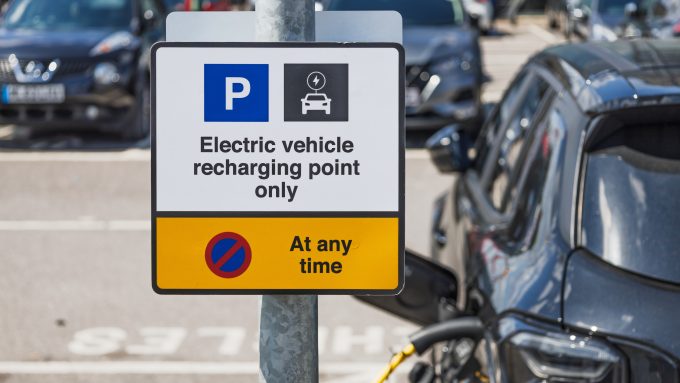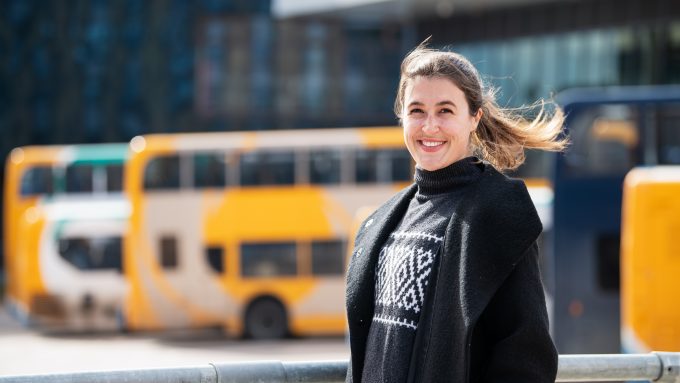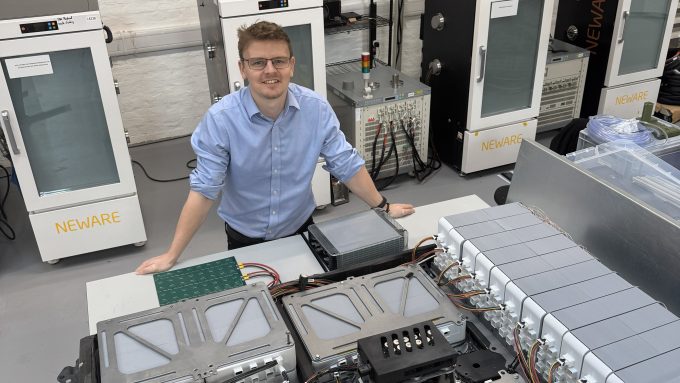
Putting passengers at the heart of the airport experience

“One thing that’s always striking when carrying out interviews with people on site is just how much diversity there is in the responses provided,” says Kate Mesh, a director from research consultant Open Inclusion, who recently spoke with deaf travellers passing through Glasgow Airport.
Kate accompanied several research participants who were provided the scenario of catching a flight this spring – walking between the entrance of the terminal and the aircraft departure gate – and noted down their responses and behaviours as they passed through the building. They were asked to describe what was on their mind and what they wanted to do next, as they were shown several examples of new technology designed to make their journeys through the airport easier.
Kate would then ask the research participants – accompanied by a British Sign Language (BSL) translator – to think about what information they want from the airport terminal, and to show the next steps they would normally take on their journey.
“Several deaf people came here with very different information needs: we talked with someone who was not very confident in flying, and someone else who is,” Kate adds. “Those two experiences create different airport journeys for Glasgow Airport and Connected Places Catapult to follow up on; and to continue with innovation.
“I’m really hopeful that as we continue the trials, that is what we keep finding. More diversity brings more perspective, and lets us build something suitable for the population, leading to more confident travellers.”Kate Mesh, director from research consultant Open Inclusion
This first technology offering on show – provided by Hello Lamp Post – allows users to access an AI digital assistant, giving up to date flight and airport information. Participants were shown a large yellow instruction installed beneath an information board on the footway outside the building.
Inside the building, next to the departure boards, participants were shown a second piece of technology offered by start-up company Signapse: a signboard that displays flight information signed in BSL.
Participants heading through security were shown a third piece of navigational technology: a digital assistant called Signly: a service for websites that provides a video overlay with sign language translations.
Following conclusion of the airport walk, participants were asked to summarise their struggles with getting around airports. “One participant told me that if something changes – such as a flight is cancelled or they have to go elsewhere – deaf people can get lost in an airport, or have to spend time asking people,” explains Kate. “So the greater use of video to help with journeys can be helpful.
“The technology we are testing is new, so we wanted to find out if something doesn’t work, or if they feel it may need improving. We want to better understand how much new technology can help deaf people to travel more easily.”
Understanding the needs of all passengers
Connected Places Catapult’s user research specialist George Wardell says two aims of the trial are to make people aware that new technology has been deployed, and find out what kind of information is useful for passengers with disabilities.
“We will take learnings from here and look to apply it to other airports,” he continues. “This is one of the first times that lots of exciting pieces of technology have been deployed at once in a UK airport. We want to see more of this type of testing to understand the needs of passengers when introducing new, different technologies, and make sure people feel comfortable using them.”
Trials of technology designed to improve accessibility for passengers at Glasgow forms part of a wider programme of work between the airport and Connected Places Catapult. Last year the pair signed a collaboration agreement for the site to become a ‘Connected Airport Living Lab’ to enhance inclusive innovation in order to boost the passenger experience, increase efficiency and to help hit sustainability and decarbonisation targets.
Travellers who are deaf, have reduced mobility or present other conditions such as dementia or are neurodiverse are encouraged to visit a special assistance desk at Glasgow Airport upon arrival.
Special assistance codes are assigned to individual travellers who register to indicate to other staff if, for instance, a passenger cannot attempt a flight of stairs or walk long distances. But even if individuals or their carers say that stairs are not a problem, staff are keen to double check: a folder of photographs at reception shows exactly what sort of stairs can be expected en-route to an aeroplane.
Rising demand for assistance services
According to Glasgow Airport’s terminal compliance manager Paul Scott, the number of people using the passenger assistance service has grown exponentially in recent years and currently stands at around 120,000 per annum. “We thought the rise was because Covid restrictions had lifted and more people who had not travelled for ages wanted to see family again. But we now believe it is also because there are so many more people arriving who are either waiting for medical care, or who have temporary disabilities.”
Paul adds that improving the service offer for those with reduced mobility and other disabilities not only makes travel easier for those who arrive at the airport, but might give extra confidence to those who do not currently feel comfortable travelling.
Airport services manager Matt Watson from Glasgow’s accessibility provider OCS adds that around three quarters of those who may need help through the airport will register with the special assistance service before arriving, which helps them to provide the best level of service they can.
But he adds: “Some people who fly may not want to use our full Passengers with Reduced Mobility service, so the introduction of more technology that allows them to get help with their journey through the airport – but without having to ask – is welcome.”

Gathering a wide range of views
Asking questions of research participants who have agreed to try out new technology at the airport is supplemented by what are known as ‘gorilla interviews’ of staff and passengers on the spot, to get their “gut reaction” to being shown new systems. Open Inclusion’s director Naomi Boal explains: “This approach will give us a different type of insight to understand passengers’ pain points.”
She adds that results of accessibility trials are important not just for airport operators and staff, but for engineers designing new infrastructure such as airports. “There has been a notable shift in policy in recent years, of the need for more accessible journeys. Understanding human behaviour can be a big eye opener, and we want to make sure the voices of participants are authentically heard. Running research shows that you care.”
Connected Places Catapult’s Director of Human Connected Design, Vasant Chari said: "Innovation works when it responds to people's needs. By testing technologies with users early in their application in new spaces, we mitigate the risk and pave the path to adoption.
"Technologies are set up for more success when they are designed by – and with – the people who use them. I'm excited about how we link this work into efforts across the sector to ensure disabled people drive the design of innovations that make experiences better for everyone.
"A big thank you to Glasgow Airport for hosting the trials, and for anyone thinking of conducting their own demonstrations, Connected Places Catapult is here to help."
"We believe that everyone deserves equitable access to travel. Partnering with Glasgow Airport, plus working with Innovative UK companies and Open Inclusion, allows us to explore transformative technologies that will revolutionise the airport experience for disabled people.Connected Places Catapult’s Ecosystem Director for Air Mobility and Airports, Andrew Chadwick
Listen to a podcast exploring how tech innovators are making it easier for disabled people to use public transport, and another looking at how flying is being made more accessible.





